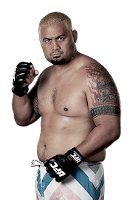BJJ offers unique body movements that strengthen the core musculature such as the external obliques, rectus abdominis, and psoas. However, beneath the surface, there are muscles that stabilize and strengthen the lumbo-pelvic-hip complex ( the real core). These muscles are the inner layer of muscles that attach directly to the spine including the transverse abdominus, multifidus and internal obliques. While most focus on training that strengthens outer muscles, it is the inner unit of muscles that provide core stabilization to distribute weight, absorb forces, and produce force.
Below are 4 core stabilization exercises that synergistically balance, stabilize, and improve your game on the mat.
 |
| 1. Butt on Ball |
This is a great starting position for establishing stabilization through the midsection. Using a stability ball, position yourself on top while lifting your legs and arms. Your first objective is to stabilize and maintain balance. To add difficulty, transition slightly from cheek to cheek (not hip to hip) while maintaining complete control.
 |
| 2. Back on Ball |
Following the same objective as example one, try lifting your knees to your chest while balancing on the ball with your lower back. You can use your hands as needed. After you feel comfortable holding the position, try transitioning from your back to butt.
 |
| 3. Belly on Ball |
This position is similar to holding mount on a larger opponent. Balance yourself on the ball while only touching your hips and stomach without touching your arms or legs on the ground. Stabilize this position and find balance.
 |
| 4. Knees on Ball |
The final stabilization involves getting on the ball with both knees. You’ll want to use your hands when you first try this, but as you advance you can try it without them. After you master the stabilization phase, transition between knees and belly holding each position at least three seconds before transitioning.
These four exercises are proven to strengthen your inner musculature. Clearly, these positions will increase the timing and efficiency of core muscle recruitment and enhance your Brazilian Jiu Jitsu top game.
- Wally Holem (Carlson Gracie Jiu Jitsu Club in Mishawaka, Indiana.)
- BJJWeekly.com
























